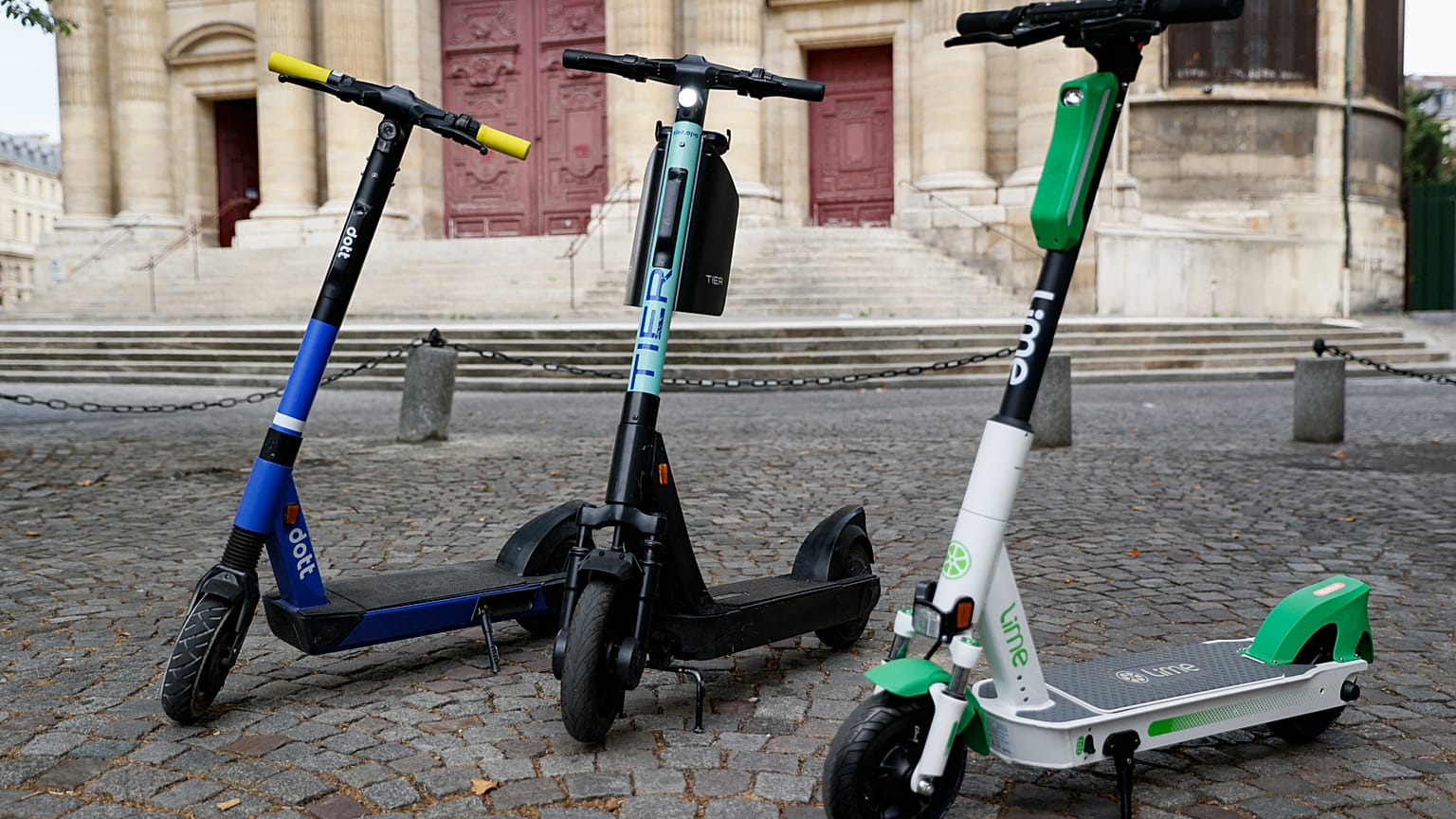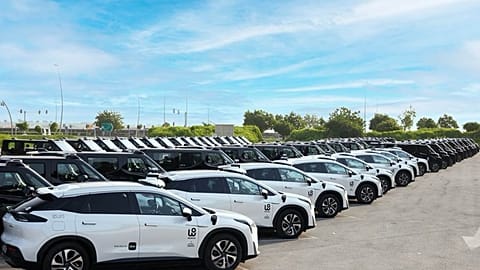Paris has officially become the first European city to ban rented electric scooters. But laws controlling their use are still evolving elsewhere.
Bidding au revoir to what has become a divisive sight on our streets, Paris officially banned rented electric scooters (or e-scooters) from September 1, becoming the first European city to do so five years after being one of the first to adopt them.
A rising number of injuries and three fatalities spurred on a public vote in April in which 90 per cent of those who took part (only 8 per cent of those eligible to take part) voted in favour of a ban.
The French capital is not alone. From June 1, e-scooters have banned on many trains and platforms in neighbouring Britain. Six rail companies announced the move, citing concerns around safety.
But which countries in Europe have the strictest rules on e-scooters? Has the number of e-scooter accidents increased in recent years? And what about the number of deaths caused by e-scooter crashes?
Deaths in e-scooter accidents
As datasets from police reports on crashes do not identify e-scooter casualties in a separate category in most countries, comparable datasets on deaths and accidents are not available across Europe.
Yet, data available from some countries indicate deaths and injuries are on the rise, mainly due to e-scooters becoming more popular.
The UK’s Department for Transport warns e-scooter riders are one of the vulnerable groups of transportation users. They are not protected by a vehicle body in the same way that car users are, plus they tend to be harder for drivers to see on the road.
That means e-scooter users are particularly susceptible to injuries.
In Britain, there were 1,349 collisions involving e-scooters last year, compared to 978 in the previous year ending in June 2021. Over the same time period, 12 people were killed in e-scooter collisions (11 of whom were riders).
There were also 1,425 injured casualties in collisions involving e-scooters, compared to 1,029 in the previous year.
In France, 24 people died in e-scooter accidents, including one death in Paris, in 2021. In Germany, five e-scooter users died in 2020.
Risks: e-scooters vs bicycles
According to an OECD risk assessment, there is no difference in the fatality risk between e-scooters and bicycles. Chances of ending up in an emergency ward are also the same for e-scooter riders and cyclists.
The OECD report shows the risk of rider death per trip on motorcycles or mopeds is five times higher than that for e-scooters.
More than 80 per cent of the deaths of both cyclists and e-scooter riders result from crashes with heavier vehicles.
Public roads, pavements and bicycle paths: Where can you ride an e-scooter?
The most controversial issue is where people can ride e-scooters. Can they be used on pavements or bicycle paths? E-scooters are allowed in public spaces in almost all countries included in the table below. Greece and the Netherlands are the exceptions.
Parisians voted overwhelmingly to ban e-scooters from the streets of the French capital, with almost 90 per cent voting for the ban.
Permission for e-scooters on bicycle paths varies. Riders are allowed to use bicycle paths in many countries, but not Greece, the Netherlands, Norway or the UK.
Rules about their use on pavements are stricter. In 15 of 21 countries, e-scooters are not permitted on pavements. This is only allowed in Belgium, Bulgaria, Estonia, Finland, Slovakia and Sweden.
In the table, green means the policy is applied in a given country and red means it is not. Orange means no information is available or the policy is not clearly defined.
Speed limits predominantly exist
Speed limits of 20-25 km/hour are most common. Out of 21 countries, speed limits are not in place in only Bulgaria, Estonia and Hungary.
Age restrictions also apply for the use of e-scooters in half of these countries. The minimum age ranges from 12 years in Austria and France to 18 years in Italy.
Insurance is required only in Denmark, France and the UK
E-scooter riders are obliged to have legal liability insurance only in Denmark, France and the UK. Riders do not need to have insurance in any other countries on this list.
The majority of countries do not impose any special rules about driving licences.
Helmets are not obligatory in most European countries
Wearing a helmet is obligatory for minors in Austria, Czechia, France, Sweden and the UK. In 16 other countries, e-scooter users of all ages are allowed to ride without a helmet.
Only 4 per cent of all e-scooter users were wearing a helmet when a crash happened. This explains the high proportion of head injuries among e-scooter victims according to a report by the European Road Safety Observatory (ERSO).
More countries may soon join Austria, Czechia, France, Sweden and the UK in making helmets obligatory.
A closer look at the UK: The government runs trials of rental e-scooters
As e-scooters have grown increasingly popular in recent years, regulations are evolving and transforming.
In the UK, trials of rental e-scooters have been taking place in selected areas. Rules established so far are quite detailed. According to the government’s guidance for people participating in trials with rented e-scooters:
- Riders must have a driving licence.
- The maximum speed for an e-scooter is 15.5 miles per hour (25 km/hour).
- E-scooters must have motor insurance, but trial participants do not need to arrange this as the insurance is provided by the e-scooter rental operator.
- Helmets are recommended but are not a legal requirement.
- Riders may use trial e-scooters on roads (except motorways) and in cycle lanes. E-scooters are not allowed on pavements.
- E-scooters should be used by one person at a time.


















